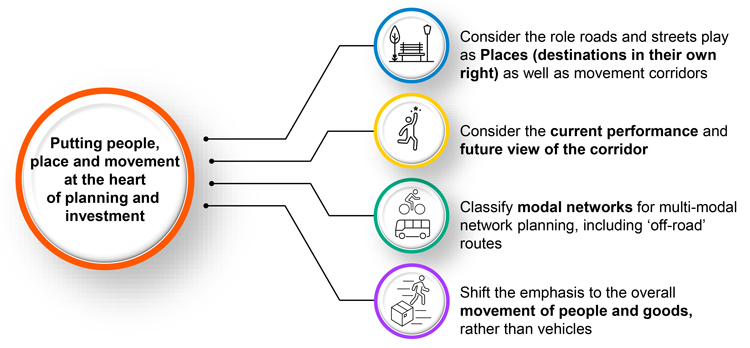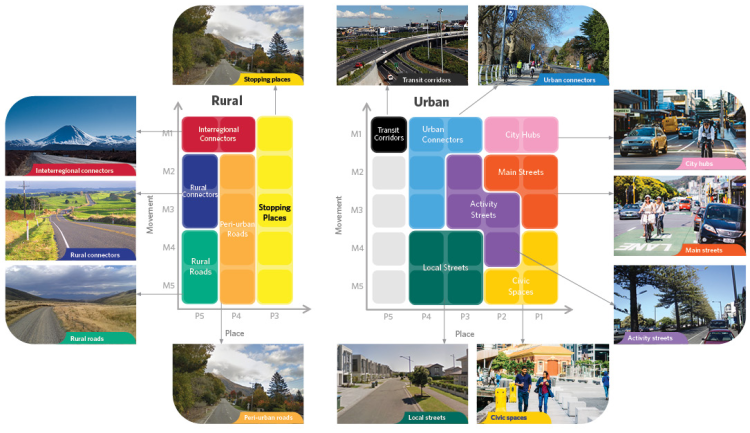Traditionally, roads and streets are considered as movement corridors only to get us from A to B.
Many of our roads are constrained by existing infrastructure, we need to consider how these roads can meet growing demand.
A new approach to classify our transport networks has been created that enables better design, planning and delivery of a modern transport system to meets the increasing needs of people, businesses, communities and our climate.
The One Network Framework (ONF) recognises that streets not only keep people and goods moving, but they’re also places for people to live, work and enjoy. The ONF is designed to contribute to improving road safety and build more vibrant and liveable communities.
Movement and Place has many uses at the strategic network planning and development level, as well as at the detailed project level.
It marries network-wide and local considerations. At its heart, the ONF organises transport links by their place and movement roles into road and street types.
The ONF is a tool to help establish network function, performance measures, operating gaps and potential interventions for each road and street type.
One Network Framework factsheet [PDF, 753 KB]
The One Network Framework provides a shift in focus to people, place and movement.

ONF focus to people, place and movement
The ONF classifies the transport network into street categories which bring together movement and place elements of a road or street.

ONF classification matrix [view larger image [PNG, 684 KB]]
The application of the ONF allows land use and transport planning to be integrated. The ONF aligns with strategic transport planning at all levels including long term plans, Regional Land Transport Plans (RLTPs) and the NLTP.
It enables investments to deliver on the strategic intent of Government, Waka Kotahi and our partners, including: